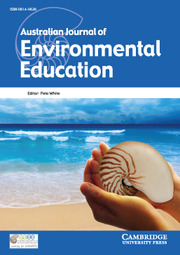Article contents
Fractal Computer Graphics as a Stimulus for the Enhancement of Perceptual Sensitivity to the Natural Environment
Published online by Cambridge University Press: 23 June 2015
Extract
The beauty and freshness of fractal geometry suggests that once again we are at the start of science and mathematics… women and men will look back on this era much as we look back to the early Greeks. (Barnsley, 1989, p. 5)
Such enthusiasm for a perceived new paradigm in the mathematical sciences is beginning to emerge within broader educational contexts (Devaney & Keen, 1989; Egnatoff, 1989; Geake, 1990a & 1990b). Much of the interest in fractal geometry has focussed on its ability to describe complex natural phenomena (Mandelbrot, 1983 & 1990; Pickover, 1987; Barnsley, 1988). Recent investigations into the visual perception of natural imagery have used fractal mathematics in describing the characteristics of such perception (Pentland, 1984; Field, 1987; Peli, 1990). This study examined human visual perception of the fractal form found in the natural environment. Specifically, this research project examined how exposure to a program of fractal computer graphics affected the perceptual sensitivity of primary school children to the natural visual environment. The underpinning rationale was to address a long standing challenge of Linke (1980) to develop a stronger theoretical basis for environmental education in Australia.
- Type
- Research Article
- Information
- Copyright
- Copyright © Cambridge University Press 1992
References
- 8
- Cited by


